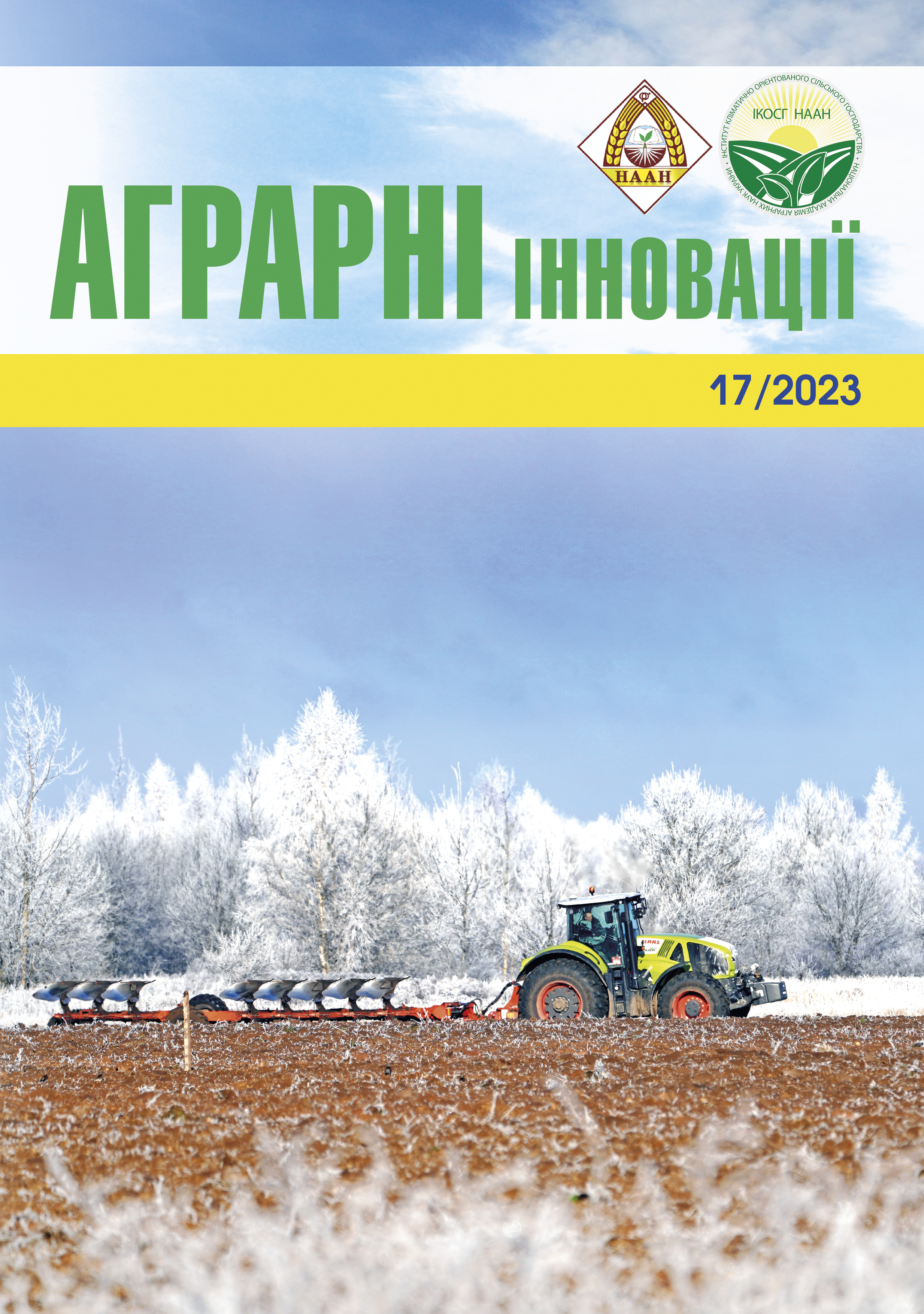HAZELNUT VARIETIES AS A SOURCE OF OBTAINING VALUABLE NUTRIENT ELEMENTS IN THE CONDITIONS OF THE NORTHERN STEPPE OF UKRAINE
Abstract
Active discourse continues in the world on the issue of providing adequate nutrition for humanity, first of all, taking into account the needs of some critically important trace elements (selenium, zinc, cobalt, etc.) and vitamins. Traditional, widespread agricultural crops do not ensure their supply in the required quantity. Purpose. The purpose of the research was to show the value of certain nutritionally useful substances of hazelnut varieties, based on which it is possible to create industrial plantations of this crop (with the aim of introduction into the zone of unstable moisture) to solve the problem of adequate nutrition. Methods. Four varieties of hazelnuts Barselonskiy, Katalonskiy, Kosford, Galle were studied for their suitability for introduction into industrial plantations in the North of Ukraine. Determination of the content of mineral substances was carried out using an Agilent 5110 inductively coupled plasma atomic emission spectrometer by the intensity of light emission with characteristic wavelengths.Results. Thus, in terms of the content of valuable organic elements and trace elements, the variety Kosford stood out (the content of calcium, sulfur, magnesium, potassium, molybdenum, cobalt, manganese, saturated with fatty acids and vitamin E, but with a significantly lower copper content than all other varieties), the second is the variety Galle (content of sulfur, zinc, saturated fatty acids, dietary fiber, vitamins A and C), then the variety Katalonskiy (content of phosphorus, zinc, manganese, vitamin C) and the worst complex is the variety Barselonskiy (high content of copper and vitamin C). No significant variability was found in the content of vitamin PP. The genotype factor was significant in most cases, that is, the content of all elements except vitamin PP, which did not vary depending on the variety. Climatic conditions did not significantly affect, with the exception of potassium content. Plantings of the variety Kosford with compensation due to additional plantings of the variety Galle should be determined by a more promising combination. Not a single variety provides complete nutritional value. Findings As a result, it can be noted that the variety Kosford is the most successful in terms of the complex content of substances valuable for the human diet, and the variety Galle complements it organically. Cultivation of the variety Katalonskiy in view of the formation of a high level of nutritive value of the hazelnut under question, cultivation of the variety Barselonskiy is impractical.
References
2. Bodaghabadi M.B., Faskhodi A.A., Salehi M.H., Hosseinifard S.J., Heydari M. (2019). Soil suitability analysis and evaluation of pistachio orchard farming, using canonical multivariate analysis. Scientia Horticulturae, 246, 528–534. https://doi.org/10.1016/j. scienta.2018.10.069
3. Calà E., Fracchia A., Robotti E., Gulino F., Gullo F., Oddone M., Massacane M., Cordone G., Aceto, M. (2022). On the Traceability of the Hazelnut Production Chain by Means of Trace Elements. Molecules, 27, 3854. https://doi.org/10.3390/molecules27123854
4. Campa N.A., Rodríguez M.R, Suárez V.B., Ferreira, J.J. (2021). Variation of Morphological, Agronomic and Chemical Composition Traits of Local Hazelnuts Collected in Northern Spain. Frontiers Plant Science, 12, 659510. https://doi.org/10.3389/fpls.2021.659510
5. Črepinšek Z., Stampar F., Kajfež-Bogataj L., Solar A. (2011). The response of Corylus avellana L. phenology to rising temperature in north-eastern Slovenia. International Journal of Biometeorology, 56, 681–694. https://doi.org/10.1007/s00484-011-0469-7
6. Romero-Aroca, A., Rovira, M., Cristofori, V. Silvestri, C. (2021). Hazelnut Kernel Size and Industrial Aptitude. Agriculture, 11, 1115. https://doi.org/10.3390/ agriculture11111115
7. Valeriano, T., Fischer, K., Ginaldi, F., Giustarini, L., Castello, G. Bregaglio, S. (2022). Rotten Hazelnuts Prediction via Simulation Modeling—A Case Study on the Turkish Hazelnut Sector. Frontier Plant Science, 13, 766493. https://doi.org/10.3389/fpls.2022.766493
8. Wani, I.A., Ayoub, A., Bhat, N.A., Dar, A.H. Gull, A. (2020) Hazelnut. In: Nayik, G.A., Gull, A. (eds) Antioxidants in Vegetables and Nuts – Properties and Health Benefits. Springer, Singapore, 559–572. https://doi.org/10.1007/ 978-981-15-7470-2_29
9. Yao, Q., Mehlenbacher, S.A. (2008) Heritability, variance components and correlation of morphological and phenological traits in hazelnut. Plant Breeding, 119, 369–381. https://doi.org/10.1046/j.1439-0523.2000.00524.x






